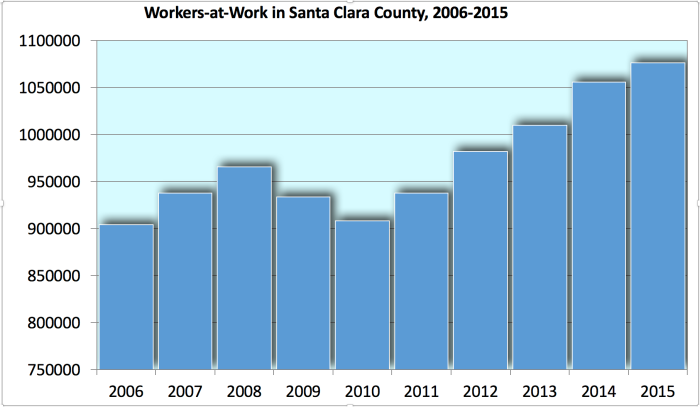What is Silicon Valley? Where is Silicon Valley? Is there a Silicon River? Well, others have written about this extensively, so I’ll just point to the wikipedia article on Silicon Valley.
For the most part, I’m equating “Silicon Valley” with Santa Clara County, California. The Bureau of Labor Statistics also publishes current data on employment patterns in “Silicon Valley” as the “San Jose-Sunnyvale-Santa Clara Metropolitan Statistical Area (MSA).” But be very careful, as this “San Jose-Sunnyvale-Santa Clara MSA” area includes Santa Clara County AND San Benito County (Hollister, San Juan Bautista, Pinnacles National Park.)
The American Community Survey data included in American FactFinder is quite valuable in depicting year-to-year changes in big picture commuting data:
- Resident Workers by County-of-Residence (Table B08007);
- Workers living-and-working in the County-of-Residence (Table B08007);
- Workers-at-work by County-of-Work (Table B08501).
The term “workers-at-work by county-of-work” seems a bit cumbersome. Why not just use the term “jobs”? Well, “jobs” (or “total employment”) is a count of the number of employed by area-of-work. On the other hand, “workers working in county-of-work” is a “body count” of workers, not the job (or jobs) held by those workers. Workers may have one of more jobs (“moonlighting jobs”). So, “jobs” or “total employment” is always greater than “workers-at-work.” It’s usually about 3-4 percent higher, and reflects the moonlighting rate for workers with multiple jobs.
Here is a chart showing workers-at-work in Santa Clara County between 2006 and 2015:

Continue reading →





